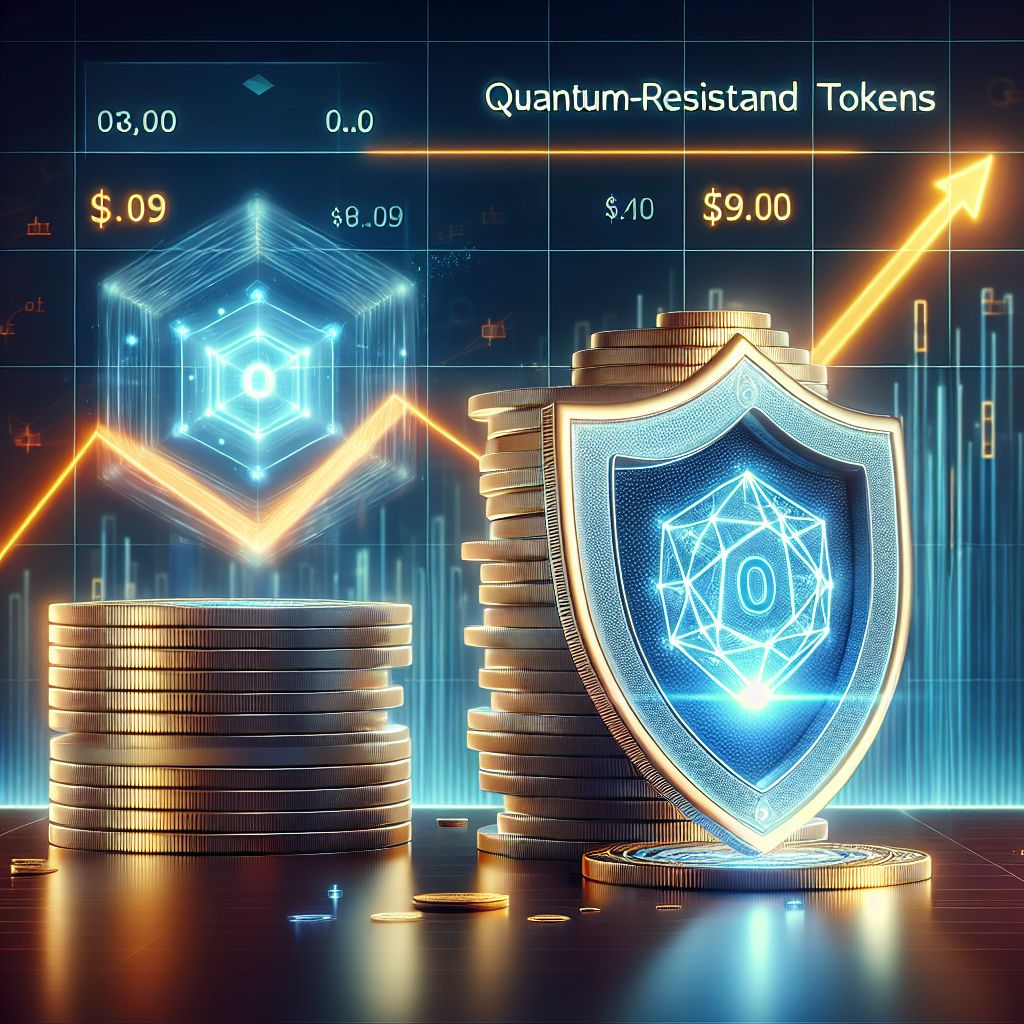Quantum-Resistant Tokens Reach New Scale in 2025
In 2025 the market for quantum-resistant crypto assets crossed a significant threshold, with sector capitalization exceeding $9 billion and daily trading volumes regularly moving above $1.5 billion. This inflection reflects growing investor attention to cryptographic resilience as quantum computing research progresses, and a corresponding acceleration in technical upgrades among a subset of blockchain projects.

Why 2025 marked a turning point
Several converging factors helped elevate post-quantum narratives in 2025:
- Heightened public discussion about quantum computing timelines from prominent industry figures and researchers.
- Regulatory and standards activity moving toward adoption of post-quantum primitives, encouraging developers to plan migrations.
- Early product launches and protocol upgrades that incorporated or experimented with quantum-safe cryptographic options.
- Investor appetite for specialized infrastructure projects that position themselves as future-proof against quantum threats.
Together, these dynamics shifted quantum resistance from an academic topic to an investable market theme.
Market snapshot: capitalization and liquidity
Market trackers reported that quantum-resistant tokens collectively surpassed the $9 billion mark in late 2025, with intraday and 24-hour active trading continuing to demonstrate substantial liquidity. Trading volumes above $1.5 billion suggest active secondary markets and investor rotation into projects positioned as offering enhanced cryptographic defenses.
While price volatility remains a feature of niche segments, the depth of trading indicates that interest is not purely speculative: institutions, developers, and some retail participants are reallocating capital to projects that emphasize cryptographic upgradeability and long-term security planning.
What investors are watching
- Technical proofs and audits that validate implementation of post-quantum algorithms.
- Adoption of NIST-endorsed or equivalent post-quantum standards as they evolve.
- Compatibility strategies that allow networks to add quantum-safe signatures or key-encapsulation mechanisms without disruptive hard forks.
- Roadmaps and on-chain tooling that enable holders to migrate or protect assets if new threats emerge.
Technical approaches: hash-based, lattice-based and more
Projects pursuing quantum resistance generally focus on algorithms and signature schemes believed to be less vulnerable to quantum attacks than widely used elliptic curve cryptography. Common approaches include:
- Hash-based signatures, which rely on well-understood cryptographic hash functions and are considered conservative choices for signature security.
- Lattice-based schemes, prized for efficiency and smaller key sizes relative to some alternatives, and often central in discussions about post-quantum public-key cryptography.
- Hybrid deployments that combine classical elliptic curve algorithms with post-quantum counterparts to preserve interoperability while incrementally improving resilience.
In practice, development teams are balancing performance, signature and key sizes, and implementation complexity. Some architectures favor modularity, enabling swaps between cryptographic primitives as international standards and best practices evolve.
Standards and regulatory signals in 2025
2025 saw increasing coordination among standards bodies and national cybersecurity agencies toward post-quantum readiness. This convergence has had a twofold effect:
- Providing developers with clearer technical options to implement in production systems.
- Signaling to markets that certain cryptographic transitions are becoming a regulatory and operational priority.
For blockchain projects, alignment with emerging standards reduces long-term migration risk and may ease enterprise adoption where regulatory compliance and survivability are essential considerations.
Developer preparedness and notable architectural choices
A number of projects incorporated quantum-resistant features proactively rather than waiting for a forced upgrade. Some of the common strategies include:
- Implementing shielded or multi-layer privacy constructs that mitigate single-point cryptographic failures.
- Adopting modular signature schemes which allow networks to support multiple signature types simultaneously.
- Designing proof systems and verification layers with quantum-safe primitives in mind.
These approaches help preserve continuity for users while enabling gradual transitions as new standards are ratified and implementation best practices are established.
Market psychology: narrative vs. technical urgency
Despite technical progress, debate persists about whether the market’s allocation to quantum-resistant tokens reflects urgent practical need or an emergent narrative-driven trade. Two competing viewpoints shape sentiment:
- Precautionary stance — proponents argue that even if large-scale quantum threats are years away, preparing infrastructure now is prudent because migrations can be complex and costly once networks reach critical scale.
- Timing skepticism — critics note that architectural shifts are disruptive and that timelines for quantum cryptanalysis capable of compromising modern public-key systems remain uncertain.
The interplay of these perspectives can intensify price action. Fear of future vulnerability can attract capital before real-world threats materialize, while successful implementation of standards and clear migration paths can validate the value proposition of quantum-resistant projects.
Investor considerations and risk management
For traders and institutional allocators assessing exposure to quantum-resistance narratives in 2025, practical considerations include:
- Evaluating the maturity of cryptographic implementations and third-party audits.
- Understanding upgrade mechanics and whether safe migration paths exist for token holders.
- Assessing network health metrics such as liquidity, active addresses, and developer activity to gauge long-term viability.
- Balancing thematic allocation with diversification to mitigate narrative-driven volatility.
These factors help distinguish between projects with substantive technical foundations and those primarily leveraging thematic marketing.
Outlook toward 2026 and beyond
As 2026 approaches, the quantum-resistance theme is likely to remain prominent in crypto markets, driven by a mix of technical development, standards evolution, and investor positioning. Several possible scenarios could shape the sector:
- Accelerated adoption: If more standards bodies and major projects adopt post-quantum primitives or hybrid approaches, confidence and capital could flow into proven implementations.
- Gradual migration: Many networks may pursue staged upgrades, using hybrid signatures to maintain interoperability while adding quantum-safe options.
- Narrative correction: Should quantum timelines extend and technical transitions prove slower or more expensive than expected, speculative interest could taper and valuations may reprice.
In any case, the market is likely to reward clarity in technical roadmaps and demonstrable security improvements over marketing claims alone.
What this means for market participants
For developers, the current environment underscores the value of building modular systems, publishing reproducible implementations, and collaborating with standards initiatives. For investors and traders, rigorous due diligence focused on cryptographic choices, upgrade pathways, and on-chain fundamentals will be critical.
Platforms and service providers will also need to prepare operationally to support asset protections, key migrations, and custodial strategies as post-quantum tooling matures. These are practical challenges that will shape both technical priorities and market structure through 2026 and beyond.
Conclusion
The rise of quantum-resistant tokens to a multibillion-dollar market cap in 2025 signals a maturing conversation about long-term cryptographic security in distributed ledgers. While timelines for quantum threats remain debated, the confluence of standards activity, developer readiness, and investor interest has made quantum resistance a material theme for the crypto ecosystem.
As the landscape evolves, projects that combine rigorous engineering, transparent governance, and practical migration strategies are most likely to sustain value. Market participants who emphasize technical validation and risk-managed exposure will be best positioned to navigate the opportunities and uncertainties ahead.
Disclaimer: This post is a compilation of publicly available information.
MEXC does not verify or guarantee the accuracy of third-party content.
Readers should conduct their own research before making any investment or participation decisions.
Join MEXC and Get up to $10,000 Bonus!
Sign Up


